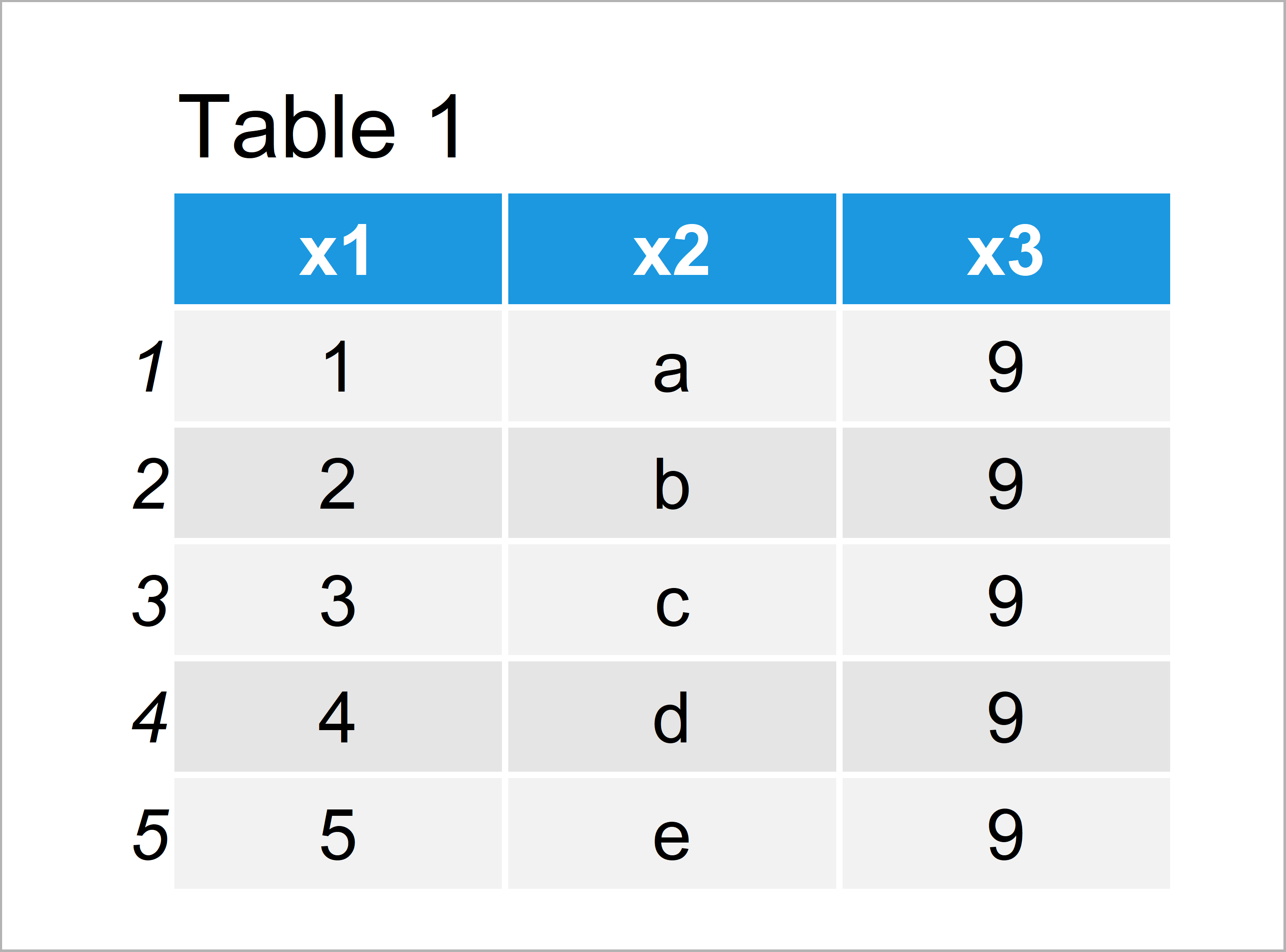Meaning of $ Operator in R (2 Examples)
In this tutorial you’ll learn how to use the $ operator in the R programming language.
The content of the page is structured as follows:
Let’s start right away!
Example 1: Using $ Operator to Access Data Frame Column
Generally speaking, the $ operator is used to extract or subset a specific part of a data object in R. For instance, this can be a data frame object or a list.
In this example, I’ll explain how to extract the values in a data frame columns using the $ operator.
In preparation for the example, we have to create a data frame in R. We can do that by executing the following R syntax:
data <- data.frame(x1 = 1:5, # Create example data x2 = letters[1:5], x3 = 9) data # Print example data

As shown in Table 1, we have created a data frame with five rows and three columns with the previous R syntax. The names of our variables are x1, x2, and x3.
Let’s assume that we want to extract the second column of our data frame, i.e. the variable x2. Then, we can use the $ operator as shown below:
data$x2 # Extract column of data # [1] "a" "b" "c" "d" "e"
Have a look at the previous output of the RStudio console. As you can see, we have extracted only the values stored in the variable x2.
Example 2: Using $ Operator to Access Element of List
As already mentioned, it is also possible to use the $ operator to return specific list elements. To illustrate that, we first have to create an example list in R:
my_list <- list(A = 1:5, # Create example list B = letters[1:5], C = 9) my_list # Print example list # $A # [1] 1 2 3 4 5 # # $B # [1] "a" "b" "c" "d" "e" # # $C # [1] 9 #
The previous output of the RStudio console shows the structure of our list. Our list consists of three list elements that are called A, B, and C. Each of these list elements contains different values.
Let’s assume that we want to return only the values of the list element B. In this case, we can use the $ operator as shown below:
my_list$B # Extract element of list # [1] "a" "b" "c" "d" "e"
The previous output of the RStudio console shows only the values that are contained in the second list element B.
Video, Further Resources & Summary
In case you need further information on the R programming codes of this tutorial, you could watch the following video of the Statistics Globe YouTube channel. In the video, I’m explaining the contents of this article:
Furthermore, you may want to have a look at the related articles which I have published on this website.
In summary: In this tutorial, I have illustrated how to apply the $ operator in R. Don’t hesitate to let me know in the comments section below, if you have additional questions.







6 Comments. Leave new
Hi Joachim,
Lovely seeing your blog! I have a question specifically for the second example. Do you think it’s possible to use the $ operator to select multiple list elements? So for example, instead of my_list$B only, you include A and B
Thanks,
Nadira
Hey Nadira,
Thanks a lot for the kind words, glad you like my website!
Regarding your question: I would use the following R code to extract multiple list elements:
Regards,
Joachim
thank you bro, it was so helpfull
Hey,
This is great to hear, glad it helped!
Regards,
Joachim
can i use $ to combine variables of unequal length to a data?
i have 3 variables of different lengths
and they are factors
length(x) = 2 (factor with 2 levels)
length(y)=2 (factor with 2 levels)
lenght(f)=5 ( factor of 5 levels and 4 values)
and the data which is file (p.txt) contain 4403
every time i try to add this variable as columns to the data it give me error of replacment due to the different length
how to combine them to the data file without losing their type as factors
i tried maxlength but it convert them to integer
i tried $ but it give me NULL the coloumns not added
i tried cbind but it give me error of different lengths
what should i do
Hello Soha,
You can check our tutorial: Create Data Frame of Unequal Lengths in R. Let me know if the solution worked for you.
Regards,
Cansu